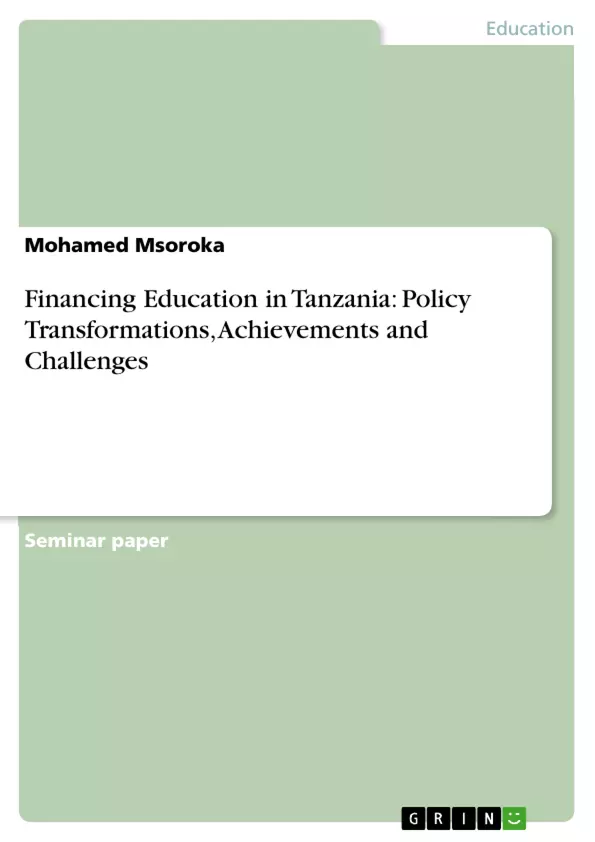Financing Education in Tanzania: Policy Transformations, Achievements and Challenges
By Mohamed Msoroka
Assistant Lecturer
University of Dodoma
Executive Summary
This paper provides an analysis of the policy transformations/changes in the financing of education in Tanzania. The paper surveys the transformations being put in place in primary education, secondary education and higher education/university in various periods to date. The paper summarizes these policy transformations in a way to provide a clear understanding of the situation to the reader. The paper gives the achievements and challenges of the current policy changes in the financing of education so as to help the provision of the third eye to the reader to help him/her to make proper judgments and help to push the wheel forward. The paper provides a summary of financing of primary and secondary education before Primary Education Development Plan (PEDP) and Secondary Education Development Plan (SEDP) and after PEDP and SEDP respectively. Moreover, the achievements and challenges encounter the PEDP and SEDP policies are also surveyed. In the higher/university education, the paper reviews the issue of policy transformations in financing of education since colonial era to date. It gives the achievements and challenges facing the cost-sharing and privatization policies in the higher education policies in Tanzania before arriving to the conclusion.
- Arbeit zitieren
- Assistant Lecturer Mohamed Msoroka (Autor:in), 2010, Financing Education in Tanzania: Policy Transformations, Achievements and Challenges, München, GRIN Verlag, https://www.grin.com/document/188058



